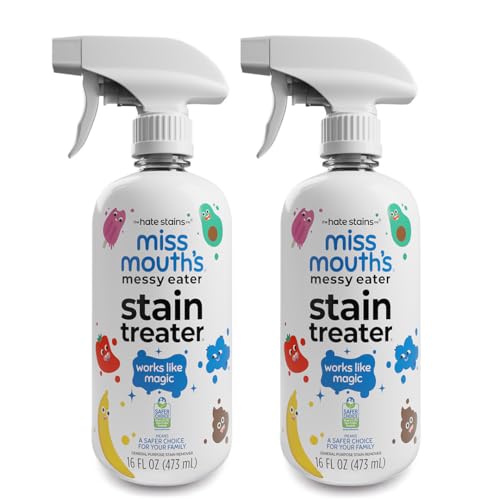



Every bottle of crimson beverage typically has some form of preservatives, commonly known as sulfites. This additive plays a significant role in maintaining the quality and longevity of the drink, preventing oxidation and spoilage. If you’re sensitive to these compounds, it’s essential to check labels carefully, as the presence of sulfites can vary widely among producers.
Many enthusiasts often wonder about the natural versus added sulfites in these beverages. While many varietals do contain naturally occurring sulfites due to fermentation, the amount can differ based on the winemaking process. Some producers may choose to add extra sulfites to enhance stability and flavor, particularly in mass-produced options. For those seeking lower levels, organic or biodynamic selections usually have minimized or no added preservatives.
It’s advisable to engage with knowledgeable retailers or sommeliers to find options that align with your preferences. Tasting different styles and understanding how sulfites affect flavor profiles can enrich your experience. Engaging with the wine community and exploring diverse selections can lead to delightful discoveries beyond the conventional choices.
Does All Red Beverage Have Sulfites?
Yes, nearly every bottle of this type of beverage will have some level of sulfites. These compounds are commonly used as preservatives and to maintain freshness during the fermentation process. The inclusion of sulfites can vary based on the winemaking techniques employed and the specific vineyard practices.
Exceptions and Regulations
Some producers may opt for organic or natural methods, which might result in lower levels or even the absence of added sulfites. However, even in these cases, naturally occurring sulfites can still be present. In many countries, labeling regulations require that products containing more than 10 parts per million be clearly marked, ensuring that consumers are informed about their presence.
Choosing Your Options
If you are sensitive to sulfites, look for labels indicating “no added sulfites” or consider organic varieties. It’s crucial to recognize that finding completely sulfite-free options can be challenging, as most wines will have at least trace amounts. Always check with the retailer or producer for specific details regarding their offerings.
Understanding Sulfites in Wine Production
It’s critical to recognize that sulfites play a significant role in the vinification process. These compounds, primarily sulfur dioxide (SO2), are added to help preserve the freshness and quality of the beverage, inhibiting unwanted microbial activity and oxidation.
The levels of sulfites can vary significantly depending on the style and method of production. Most producers utilize them in the fermentation stage, and they may also be added prior to bottling to ensure stability during storage and transport. The maximum allowable limit for these additives in most countries is around 350 mg/L, though many wines contain much less.
For individuals sensitive to sulfites, it’s advisable to seek out options that are labeled as “sulfite-free” or those with lower concentrations. However, it’s important to understand that even organic or natural varieties often have some level of these compounds, as they can occur naturally during fermentation.
| Type of Wine | Typical Sulfite Levels (mg/L) |
|---|---|
| Conventional | 100 – 250 |
| Organic | 30 – 100 |
| Sulfite-free | 0 – 10 |
When choosing a bottle, consider the sulfite content as part of your overall selection process. This awareness will enhance your experience and help identify which options align with your personal preferences and health considerations.
Red Wine Varieties and Sulfite Levels
Specific grape types have distinct profiles for preservative content. For instance, Cabernet Sauvignon often has higher levels due to its tannin structure, which aids in aging. Merlot, on the other hand, typically features lower amounts, making it a smoother option.
When choosing a bottle, consider the following varieties and their average preservative levels:
- Cabernet Sauvignon: Generally higher levels, enhancing longevity.
- Merlot: Moderate levels, resulting in a softer mouthfeel.
- Pinot Noir: Often lower levels, showcasing delicate flavors.
- Syrah/Shiraz: Moderate to high levels, contributing to robust profiles.
- Zinfandel: Variable levels, influenced by production methods.
Regions also play a role. For example, wines from California may adhere to stricter regulations regarding additives compared to those from other areas. Organic producers often limit or eliminate these compounds, appealing to health-conscious consumers.
It’s advisable to check labels when selecting a bottle. Look for terms like “no added sulfites” or “organic” if you prefer options with reduced levels of these compounds. Remember, tasting preferences vary; some may not notice differences, while others may have sensitivities.
In summary, understanding grape types and regional practices can significantly influence your choices. This knowledge allows you to select bottles that align with your taste and health preferences effectively.
Health Implications of Sulfites in Red Wine
Individuals sensitive to certain compounds may experience adverse reactions to the presence of sulfites. Symptoms can include headaches, hives, and gastrointestinal discomfort. If you have asthma or a known sensitivity, consider selecting wines labeled as “sulfite-free” or those with lower concentrations of these additives.
Potential Allergic Reactions
- Common symptoms include headaches, nasal congestion, and skin rashes.
- Monitoring personal tolerance levels is advisable; keeping a journal may help identify triggers.
- Consulting with a healthcare professional can provide guidance tailored to individual needs.
Impact on Asthma
For asthmatics, sulfites can exacerbate symptoms. It’s prudent to read labels and choose varieties specifically designated as low in sulfites. In some cases, non-wine alternatives may be better suited for individuals prone to respiratory issues.
In addition to examining sulfite levels, consider the overall quality of the beverage. Factors such as aging potential, grape variety, and production methods can influence health outcomes. If interested in related topics, you can also check out can you put wetsuits in the washing machine the dos and donts. This might provide insights into caring for your wine accessories.
Identifying Sulfite-Free Options
For those seeking alternatives without added preservatives, look for brands specifically labeled “sulfite-free.” Some producers focus on crafting organic varieties that avoid these compounds altogether. These wines often emphasize natural fermentation processes, which can enhance flavor without relying on synthetic additives.
Regions like California and Oregon host wineries dedicated to organic practices. Check certification labels to ensure authenticity. Additionally, consider exploring smaller, boutique vineyards that prioritize minimal intervention methods in their winemaking.
When shopping, scrutinize labels carefully. Terms like “no added sulfites” or “naturally low in sulfites” may indicate a lower presence, but always verify with the producer. Engaging with knowledgeable staff at wine shops can also lead to valuable recommendations.
Participating in tastings can provide firsthand experience with various options. Pay attention to the flavor profiles and how they pair with different dishes. This approach not only broadens your palate but also helps identify personal preferences in wines without additives.
Lastly, online wine retailers often list details about production methods. Utilize these resources to find selections that align with your preferences, ensuring an enjoyable experience without unwanted preservatives.
Regulations Surrounding Sulfite Labeling in Wines
Wineries must adhere to strict regulations regarding the labeling of additives in their products. In the United States, any bottle that includes more than 10 parts per million of these compounds must display a warning on the label. This is a requirement enforced by the Alcohol and Tobacco Tax and Trade Bureau (TTB). The warning typically reads: “Contains sulfites,” ensuring consumers are informed about potential allergens.
International Standards
Globally, regulations vary. In the European Union, the labeling must also indicate the presence of these compounds, with a threshold set at 10 mg/L. Australia has similar requirements, reflecting a commitment to consumer safety. These regulations aim to provide transparency and help individuals with sensitivities make informed choices.
Impact on Consumers
Awareness of these labeling laws plays a crucial role in making educated decisions. Shoppers looking for specific qualities in their beverages should actively seek out labels that clearly indicate the presence of any additives. Understanding these regulations not only empowers individuals but also drives demand for clarity and quality in the marketplace.
FAQ:
Do all red wines contain sulfites?
No, not all red wines contain sulfites. While many red wines do have added sulfites as a preservative to prevent spoilage and oxidation, some producers create sulfite-free wines. These wines are made using natural winemaking techniques that avoid the addition of sulfur dioxide. It’s essential for consumers to check the label or inquire with the producer to determine if a particular red wine has sulfites.
Why are sulfites added to red wine?
Sulfites are added to red wine primarily for their antioxidant and antimicrobial properties. They help to preserve the wine’s freshness and flavor by preventing oxidation and inhibiting the growth of unwanted bacteria and yeast. This is especially important in wines that may undergo various fermentation processes or are stored for extended periods. While some individuals are sensitive to sulfites, most people can consume them without any adverse effects.
How can I find sulfite-free red wines?
To find sulfite-free red wines, start by looking for labels that specifically state “sulfite-free.” Some organic wine producers focus on creating wines without added sulfites, so exploring organic wine shops or brands can be beneficial. Additionally, checking online retailers that specialize in natural wines can provide options. If you visit a winery or a wine shop, don’t hesitate to ask the staff about their selection of sulfite-free wines. They can often guide you to the right choices.










